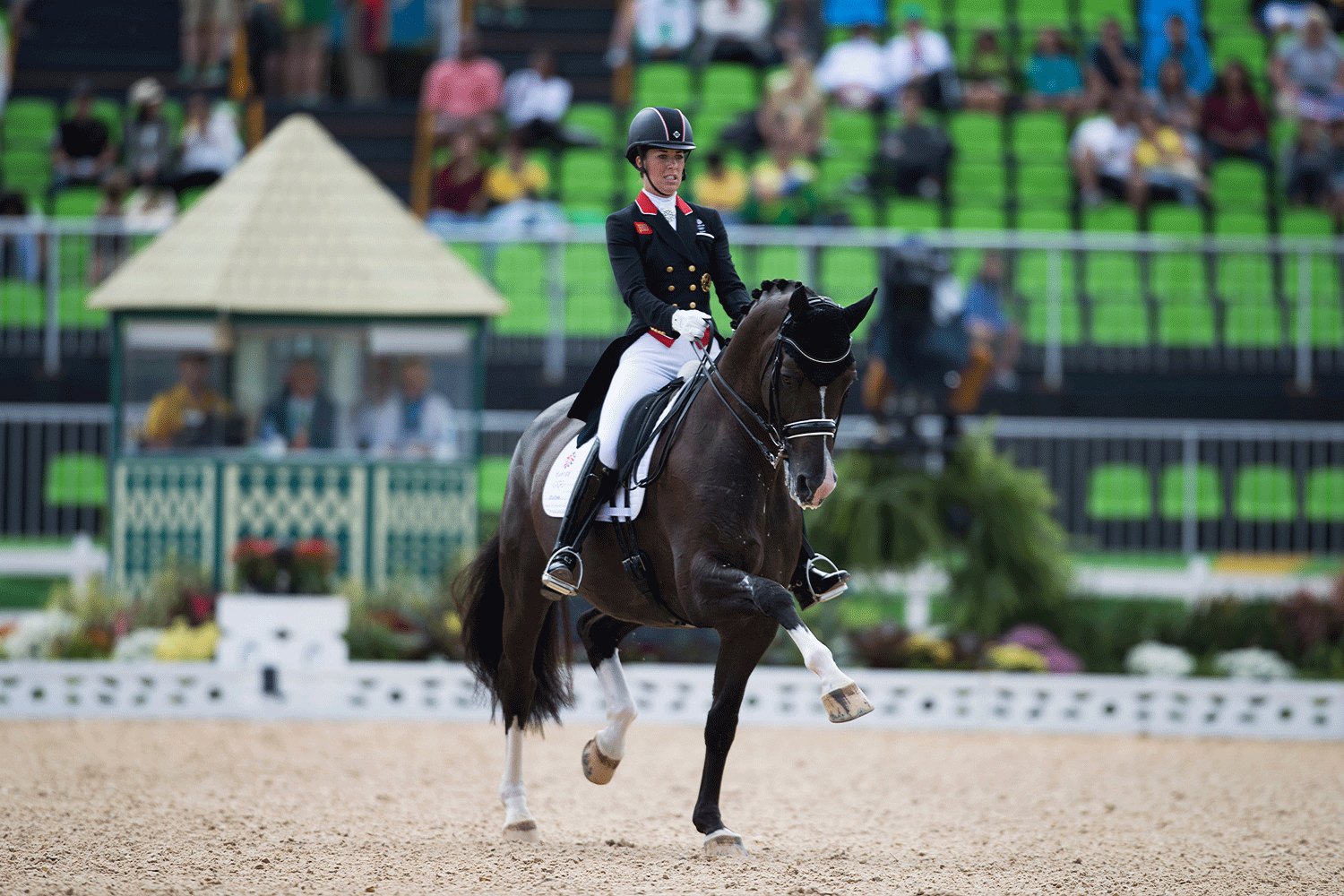Menu

The trot can be a direct source to many frustrations for equestrians. Some types of trot are hectic, slow or unenergetic. This particular gait requires flexibility, balance and self-support to achieve high percentages with the judges. Charlotte Dujardin, the British star when it comes to dressage, explains in a masterclass arranged by Dressagehub.com about the development you can have if you work correctly with the trot. Her main point is that most horses can develop an amazing trot. At the end of the article you can watch a video where Dujardin explains about the great trot.
When Charlotte Dujardin are looking for new horses, she mostly measures them on the walk and canter. Trot is in her opinion something you can change as it becomes stronger whereas walk and canter is steady and not possible to develop a lot. You can improve them, but not change them. However, this is much easier with trot. She elaborates:
“I am never worried about horses with a bad trot. With my training and system, I can make it look spectacular. Even an ugly horse can look really beautiful.”
The purpose of warming up is to loosen up the horse. It is not during this you should ask the horse to perform extra with a lot of self-support, and an increased stride length. Warming up is, logical enough, to warm up the muzzle and prepare the horse for the difficult exercises. Instead, you should allow the horse to choose its own stride length, and make sure it stretches the upper part of the back by making it go long and deep so it stretches the neck as much as possible.
“The most important part is that it uses its body correctly. The trot does not need to be fantastic from the beginning as long as I can feel that its hindlegs is active and that it uses the body well.”
When the horse is finished with the warming up you can expect more of the quality in the trot. Dujardin shorten the rains a bit, sits down on the horse and creates suspension by using the legs gently.
Suspension is a concept often used when training horses. It is known as a term describing how to project energetic but controlled force from the hindquarters of the horse through its body. The ultimate goal is: When this force leads to a flexible horse with an easy contact towards the hand of the rider. Dujardin explains: “The horse needs to be light and easy in the front and react upon the legs and seat.”
Suspension should not be confused with activity that only refers to the horse’s naturally ability to take big steps. If a horse is full of suspension it will “levitate” more. This is important when or if the horse should perform a piaffe or passage. This levitation should not be too uncontrolled so it develops into over-excitement, stiffness and resilience.
“I place my leg close to the horse with a simple touch and support with the rains. This way I achieve a lift in the horse and suspension," Dujardin explains.
Suspension is the wish for an energetic horse, carrying itself from behind and into the bit – by a flexible and bouncing horse back. All this makes it possible for the horse to move athletic, full of power and showing off great gaits. It is all a question of training, so it is only a matter of getting to work! Just watch the video below and be inspired for your next trot work.